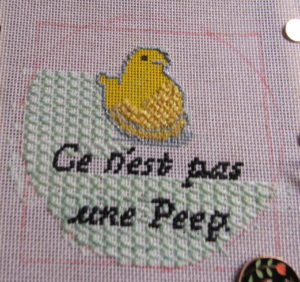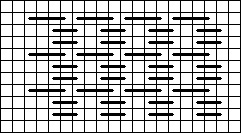
Last Sunday, I was stitching this Froopy Designs canvas for my daughter. It’s going to be a candy dish. I decided that I needed to stitch some background before finishing the lettering. The spaces between the letters are so small, that many stitches can have problems. By starting to stitch in the space between the lines, I could get a good feel for the stitch and still find out quickly if the stitch would work.
I found this interesting darning pattern in Stitch Landscape. I stitched the background using Threadworx Overdyed Vineyard Silk. I call the stitch Magritte, below, because the canvas is a play on Magritte’s pipe canvas.

About Janet M Perry
Janet Perry is the Internet's leading authority on needlepoint. She designs, teaches and writes, getting raves from her fans for her innovative techniques, extensive knowledge and generous teaching style. A leading writer of stitch guides, she blogs here and lives on an island in the northeast corner of the SF Bay with her family

I’d love to have a stitch for small needlepoint berries, some of which are behind each other. I’ve tried a number of different techniques, but they all leave the berries looking messy and not smooth. I’m
wondering if satin stitch, piercing the canvas threads might be the best. What is your experience?
I don’t like piercing canvas threads for this, because there are easier ways to solve this problem.
You should do two things. First, use a darker thread for the berries that are behind other berries. If there are more than two layers of berries, the lower layers should be darker still.
Second, pick smaller stitches for the lower layers.
These two things are the same things we see in pictures as items are behind each other. By doing them, you create depth that might not exist in the painted canvas.
Keep stitching,
Janet